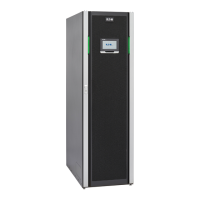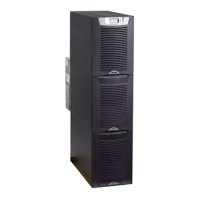119 Eaton® 9390 (100–160 kVA) UPS Installation and Operation Manual 164201604—Rev F
CChhaapptteerr 1100 UUssiinngg FFeeaattuurreess aanndd OOppttiioonnss
The many standard features of your UPS system provide consistent, economical, and dependable power
protection. In addition, you can add available options to enhance the performance of your system. This chapter
provides descriptions of some of the features and options introduced earlier in this manual. For the customer
interface panel and terminal locations and for terminal wiring information, see Figure 84 and Figure 86
1100..11 BBuuiillddiinngg AAllaarrmm MMoonniittoorriinngg
This standard feature lets you connect the UPS to your building alarms, such as smoke detectors or
overtemperature alarms. The customer interface terminals for external connections are located inside the UPS.
You should use twisted-pair wires for each alarm input and common.
The building alarms can be programmed to display the alarm functional name.
1100..22 GGeenneerraall--PPuurrppoossee RReellaayy CCoonnttaacctt
One general-purpose relay contact is provided as a standard feature on the UPS. The alarm contact is located
inside the UPS on the customer interface terminal board.
You can use a normally-closed or normally-open contact. If the state of the contact changes from the state you
specify as normal, a signal is issued. You can connect this contact to equipment at your facility (such as a light
or an alarm bell) to let you know when an alarm is active on the UPS. This feature is useful if the UPS is located
in a remote area where the UPS horn may not be heard immediately.
Contacts should not be operated in excess of 120 Vac @ 5A maximum.
Using Features and Options

